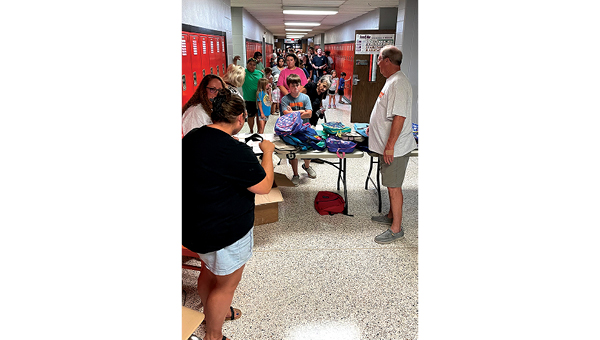What happened to public swimming pools?
Published 10:06 am Tuesday, July 18, 2023
|
Getting your Trinity Audio player ready...
|
Most communities – large and small – share a common summertime obsession: the public swimming pool. For many kids, these pools capture – or did – capture the season’s essence, setting the rhythm of days till school starts again.
Whether you were a local or a visitor, a plunge into a municipal swimming pool offered a chance to cool off and find common ground with strangers, an increasingly rare opportunity in a polarized country. Public swimming pools are a rarity these days, especially in Elizabethton with only one pool – the Franklin Pool. At one time there was the City Pool in Blackbottom, a city-operated pool in the Douglas community, Harmon’s Pool at Hampton, Greene’s Pool on Highway 321, and the Roan Mountain State Park Pool. The state’s goal is to permanently close the Roan Mountain Pool, however, residents of that area are making a push to keep the pool open, and we’re all for it.
True, many homes now have their own pool, but there are still many families who do not have a pool, so a public pool still has its place in the community.
In the early 1900s, public pools were in demand. Not only were they a way to stay cool in the hot summer months, but they were also a way to “clean off” for lower-class labor workers. Many rural towns saw pools as the epicenter of their neighborhoods, and the place where many social gatherings were held. However, the term “public” began to shift in the post-war era when pools became segregated by race, either by law or by the social pressures of the time. This caused children who previously were allowed the luxury of a public pool to have to swim in dangerous rivers and lakes. In 1964, many communities refused to follow the Civil Rights Act, and shut down their pools instead of desegregating them. The long-term result was the mass rush to build private pools in people’s backyards and use public facilities less.
The disappearance of community swimming culture has been a huge loss everyone. It’s been more than a century since urbanites began to swim in pools rather than in rivers. For the first half of their history, these pools were low-cost, high-fun places to mix, socialize, see, be seen and cool off. It’s hard now to imagine how much delight our parents and grandparents took in public swimming. A 1933 survey found that nearly 10 times as many people swam frequently as rode bicycles, and almost as many swam as went to the movies.
At their best, pools like these are still democratic spaces, leisure spaces for the masses, where anybody who knows how to swim, or is willing to stand in the shallow end, can have as much fun as an Olympic star. No expensive gear or uniforms needed.
Many of the urban pools of the 20th century were built with federal dollars, coming from infrastructure programs like the Works Progress Administration in the 1930s or from federal antipoverty grants like those created during President Lyndon B. Johnson’s administration. It’s much more difficult, especially today, for cities to find the kind of cash needed to build, or staff, public pools.
But even if there were a wave of sparkling public pools built across the land, it might be hard to fill them up with splashing children. Children of all economic classes are more likely to have their time scheduled during long summer days, at camps or enrichment programs. If they’re not, they are still more likely to have air conditioning, and thus not as desperate to cool off.
Many small towns and cities have embraced a more economical water-park model, building splash pads, sprinkler parks that do an adequate job of cooling you off. But, they provide nothing like the old poolside culture.
Things change every day – sometimes for the best, and sometimes, not. If you don’t have the pool, there’s always the water hose, a shallow place at the river, or perhaps a friend with a pool, who will invite you over for a swim.
We do encourage the state to take a second look at the Roan Mountain State Park Pool. It is a much needed resource, not only for the park, but for the community. To close it would be short changing the community.





